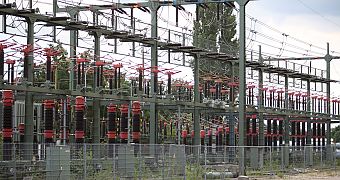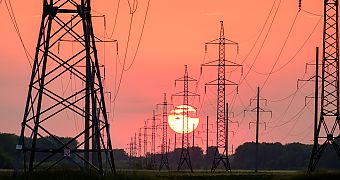FuturePowerFlow for a predictive grid congestion management
Our sophisticated IT platform for grid operators
With the growing number of volatile renewable energy producers, the management of the electricity grid gets more and more complex. To exploit the full potential of renewable energies, we developed FuturePowerFlow – a worldwide unique algorithm-based system. It laps locations of the many thousands decentralised renewable energy generators, weather forecasts, operation modes of renewable energy plants, grid infrastructure data and demand forecasts to make the integration of renewables precisely plannable for the next 48h. Instead of just reacting on circumstances, we enable grid operators to recognise grid congestions at an early stage, actively plan and exactly control the mix of energies in their grids avoiding unnecessary congestions and reducing their costs.
FuturePowerFlow operates in accordance with the various implementation specifications of different country's such as the European Renewable Energy Directive or the German Grid Expansion Acceleration Act (NABEG 2.0)
FuturePowerFlow is characterized by its modular software architecture in a "Platform as a Service" (PaaS) approach. On the one hand, the platform can cover the complete process of forecasting, grid flow calculation, scheduling and accounting. On the other hand, it also allows the flexible combination of individual functionality and individual configuration for each user. Our software integrates smoothly into existing processes and IT architectures. Thus, the platform adapts to the different requirements of different users, from distribution system operators at different voltage levels to transmission system operators at the highest voltage level. The flexibility of this complete solution is also demonstrated by the numerous grid operators who already rely on FuturePowerFlow for the implementation of Redispatch 2.0.
On May 13, 2019, the German legislator passed the Grid Expansion Acceleration Act (NABEG), which contains essential specifications for the new methods of grid congestion management "Redispatch 2.0". These specifications have to be implemented by grid operators by October 1, 2021. Redispatch 2.0 replaces the existing specifications for feed-in management and for the first time integrates renewable energies and distributed producers from 100 kW into the Redispatch process.
The Redispatch process no longer reacts in real time to grid congestions but rather creates grid analyses based on forecasts and identifies bottlenecks at an early stage. Thus, measures against expected grid bottlenecks of operating resources can be initiated proactively.
The Redispatch 2.0 process essentially comprises the following steps:
- A high resolute grid network analysis and forecast based on individual plant forecast, schedules, grid states and consumption.
- The prediction of load flows and congestion in different variations.
- An optimized Redispatch dimensioning and the subsequent implementation of a plant scheduling.
- The market communication between different players as well as balancing and accounting.
You want to learn more about our solution for grid management?
Please contact us for further information:
Tel. +49 441 212 110 or mail@emsysgrid.de

The project leading to this application has received funding from the European Union's Horizon 2020 research and innovation programme (grant agreement No 947129).




